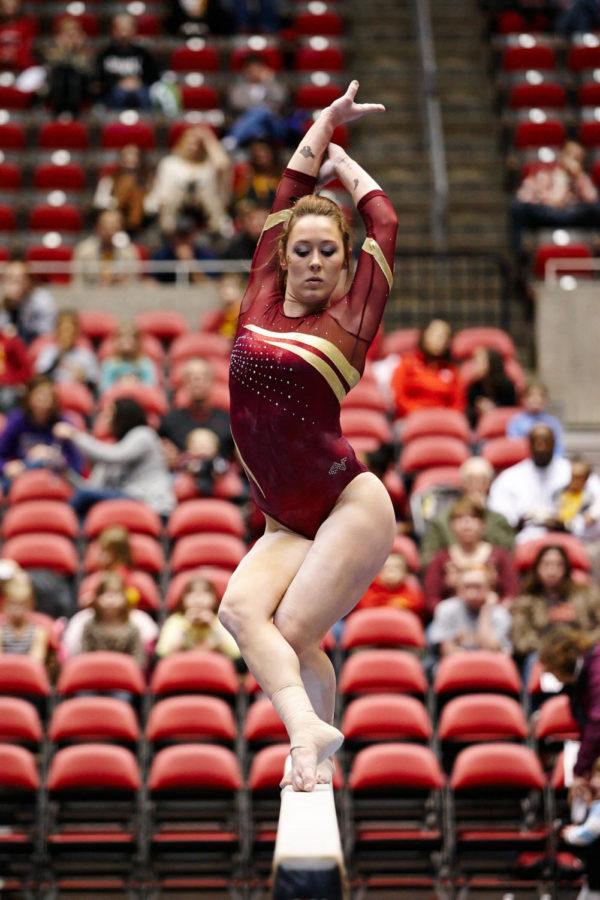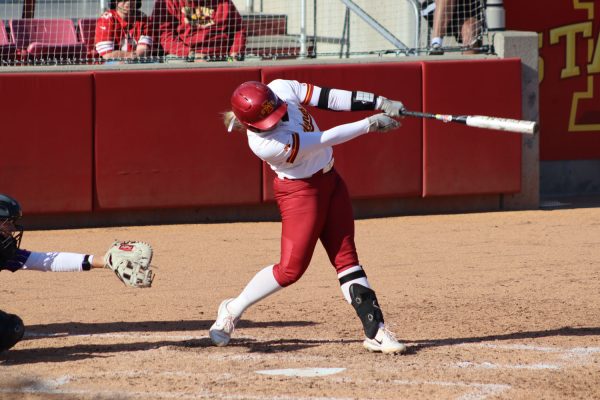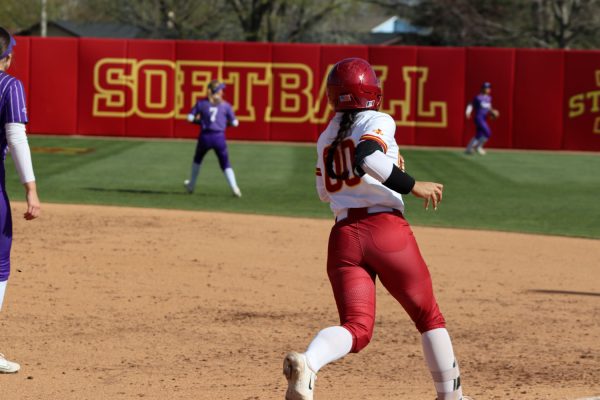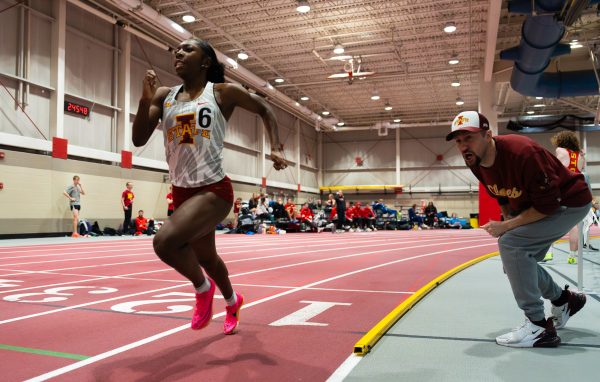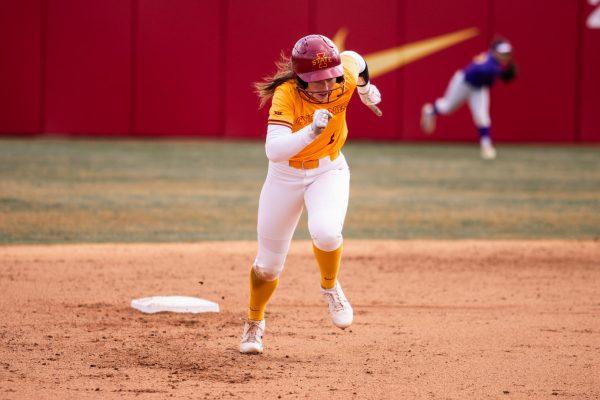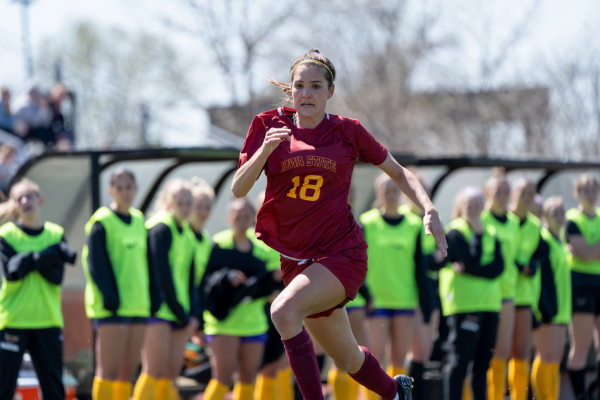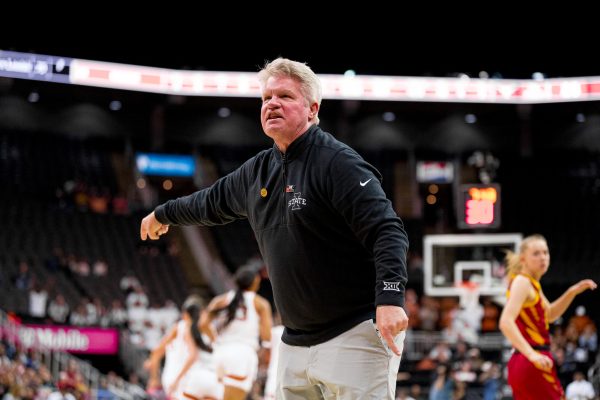Variety of injuries, dangers present in gymnastics
Junior Sammie Pearsall shows off for the judges on the balance beam.
March 31, 2015
Most spectators would link severe injuries with overly physical contact sports, but what about the more graceful ones, such as gymnastics?
Gymnastics, like any other sport, comes with its own dangers that can result in a variety of injuries.
According to a current study of more than 200 injury reports in the 2015 season by William A. Sands, who has a doctorate in physiology, more than 40 percent of gymnastics-related injuries come from participating in beam, bars, vault and floor routines. The remaining 60 percent of gymnastics injuries come from other aspects of the sports, such as tumbling and conditioning.
Many of these types of injuries have been experienced by the ISU coach Jay Ronayne.
“I’ve been around a long time, I started when I was eight years old. In 40 years I’ve seen a lot,” Ronayne said. “Everything from catastrophic spinal injuries to reparable [injuries]. A lot of knee injuries and a lot of ankle injuries.”
Of the four events that collegiate teams like Iowa State compete in, the balance beam and vault tie for the highest percentage of injuries with 14.7 percent. In the last four home meets for the Cyclones, six falls have occurred on the balance beam, but avoided major injuries in each of those falls.
Not only has the balance beam caused Iowa State trouble, but the bars have been a struggle for some ISU gymnasts in the past.
“I’ve been dealing with my shoulder on and off for the past three or four years, said junior Sammie Pearsall. “It started when I had shoulder surgery my senior year of high school, and my freshman year [in college] it came up again and kept me out of bars that season and sophomore year. … I was working on rehabbing it and instead of doing bars, I did beam and floor. Through my rehab last summer, I was able to get strong enough to start on bars.”
Pearsall’s injury did not stop her from working toward her goals. She continued to improve herself through rehab. Pearsall conditioned herself in order to keep her body prepared for the challenges and work involved with gymnastics. Although the sport requires its competitors to use muscles in a way that is hard to recreate in an average gym setting, Pearsall found a way to make herself better.
“The best thing I’ve learned to do is to keep my cardio and endurance up,” Pearsall said. “So say my upper body is hurting, then I make sure that my lower body there’s no muscle atrophy and keep training like nothing’s wrong, but balancing what you can keep in top shape when other things need to rest.”
While the Cyclones, like Pearsall, work to come back from injuries stronger, the team also works on creating a safe environment for the gymnasts to learn their new routines.
If one were to walk into the practice room that Iowa State works in every day, they would see a variety of tools the team uses to prepare for the difficult routines they work toward. From low beams for beginning routines to soft landing pads, the Cyclones are no joke when it comes to safety first.
“We do a lot of training with soft surfaces, we do a lot of landings on soft surfaces,” Ronaye said. “We use “marshmallow mats” because essentially you can crash on your face and get right back up and do it again and again. You get a lot of repetition in safely.
We try to prevent as much over usage as we can. On all the events we try to do sound progressions, so it’s not like, ‘hey, try this skill out for the first time and see what happens.’ We try to build up to [routines] with lead-up drills.”
These precautions help the Cyclones come in and out of each season with as few injuries as possible. Iowa State does all it can to make sure that its team members don’t fall victim to an elegant, but dangerous sport.

